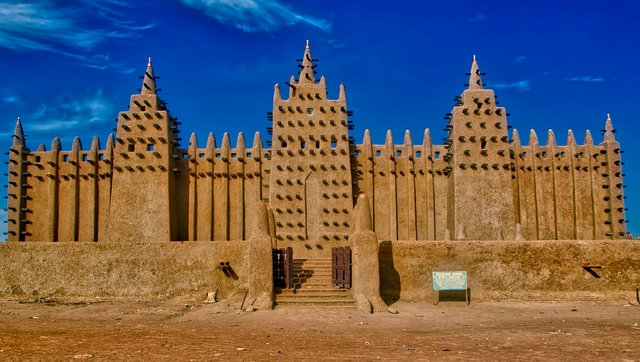The Role of Local Landmarks and Monuments in Preserving African Cultural Heritage - The Great Mosque of Djenné in Mali

In recent years, there has been a growing concern about the preservation of African cultural heritage, as many traditional practices and beliefs are at risk of disappearing. Local landmarks and monuments play a crucial role in preserving African culture by providing a tangible link to the past and serving as a source of inspiration for future generations.
Africa is a continent rich in history and culture, with many local landmarks and monuments that hold significant importance to its people. One such landmark is the Great Mosque of Djenné, located in Mali. This mosque is a testament to the ingenuity and creativity of the Malian people, and is recognized as one of the greatest examples of Sahelian architecture in Africa.
The Great Mosque of Djenné was built in the 13th century and is the largest mud-brick structure in the world. It is a UNESCO World Heritage Site and attracts visitors from all over the world who come to marvel at its unique design and learn about its cultural significance.
The mosque is not only a religious center but also a social and cultural hub for the people of Djenné. It plays a significant role in the annual celebration of the end of Ramadan, known as the "Creneau," which brings together thousands of people from across the region to participate in a colorful and vibrant festival.
The history and cultural significance of the Great Mosque of Djenné can be traced back to the Mali Empire, which was one of the most powerful empires in West Africa from the 13th to the 16th century. The mosque was built during the reign of the Mali Emperor, Koi Konboro, who is said to have commissioned the construction of the mosque in gratitude to Allah for his victory over his enemies.
The mosque is a unique example of Sudano-Sahelian architecture, which is characterized by the use of mud bricks, wooden beams, and protruding wooden logs that are used to support the structure. The mosque is also decorated with intricate geometric patterns and Arabic calligraphy that reflects the Islamic influence on the region.
Today, the Great Mosque of Djenné stands as a symbol of the resilience and creativity of the Malian people, who have managed to preserve their cultural heritage despite the many challenges they have faced over the centuries.
If you are planning to visit Africa, a visit to the Great Mosque of Djenné should be on your list of must-see places. It offers a unique opportunity to learn about the history and culture of West Africa and witness the remarkable achievements of the Malian people.